They may not see this as their forever home, but that hasn’t deterred one interior designer and her husband from making daring decisions.
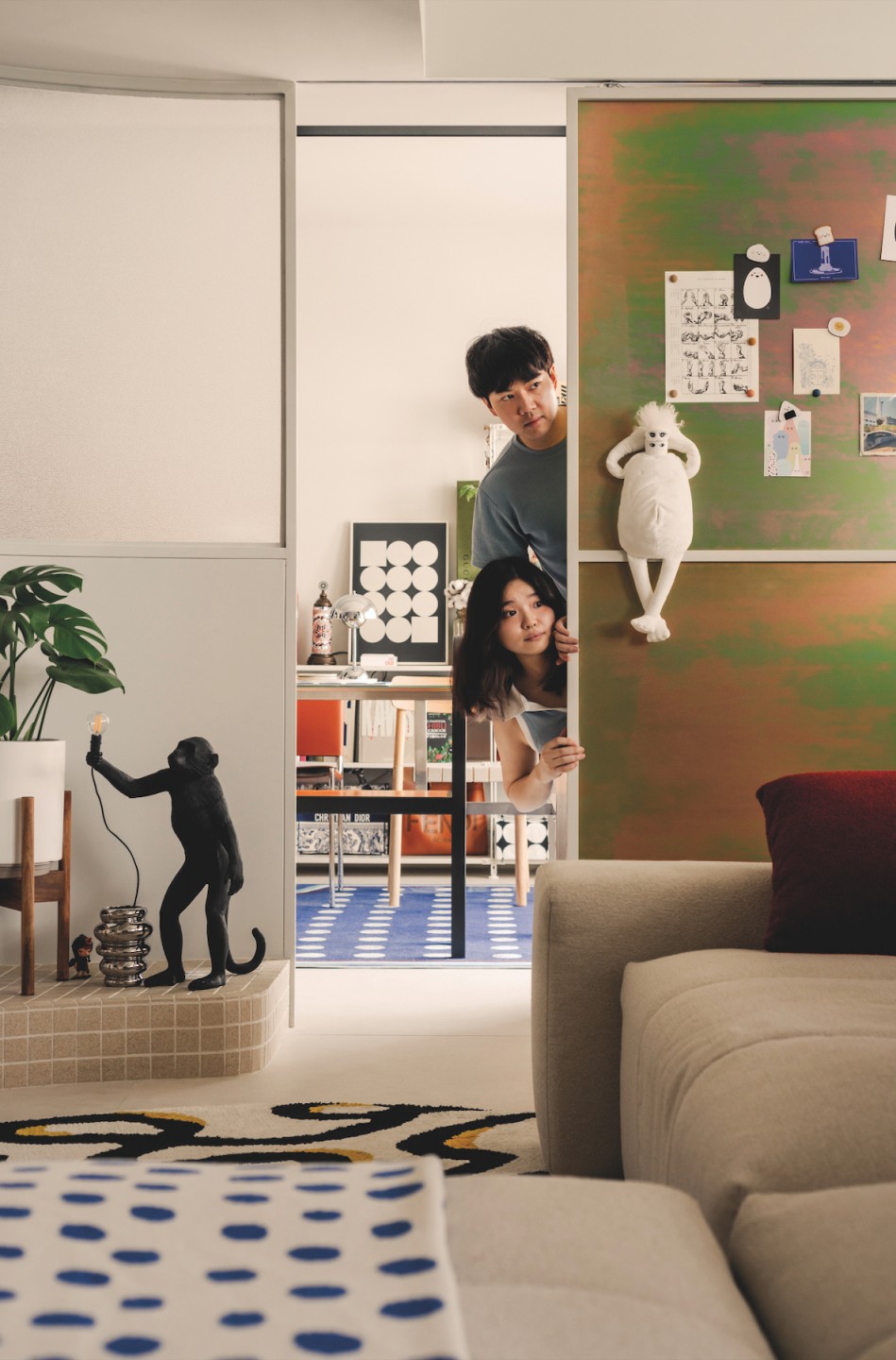
With a decade of experience in interior design, Ruby, the founder of Tofu Studio, recently embarked on her most personal project yet—designing a home for herself and her husband, Joshua.
The couple embodies the adage “opposites attract.” Ruby thrives on spontaneity and a bit of chaos, while Joshua, a legal professional, is all about efficiency and organisation. Despite these differences, they are both homebodies with a passion for hosting and dog-lovers who will be welcoming a canine companion into their home by year’s end.
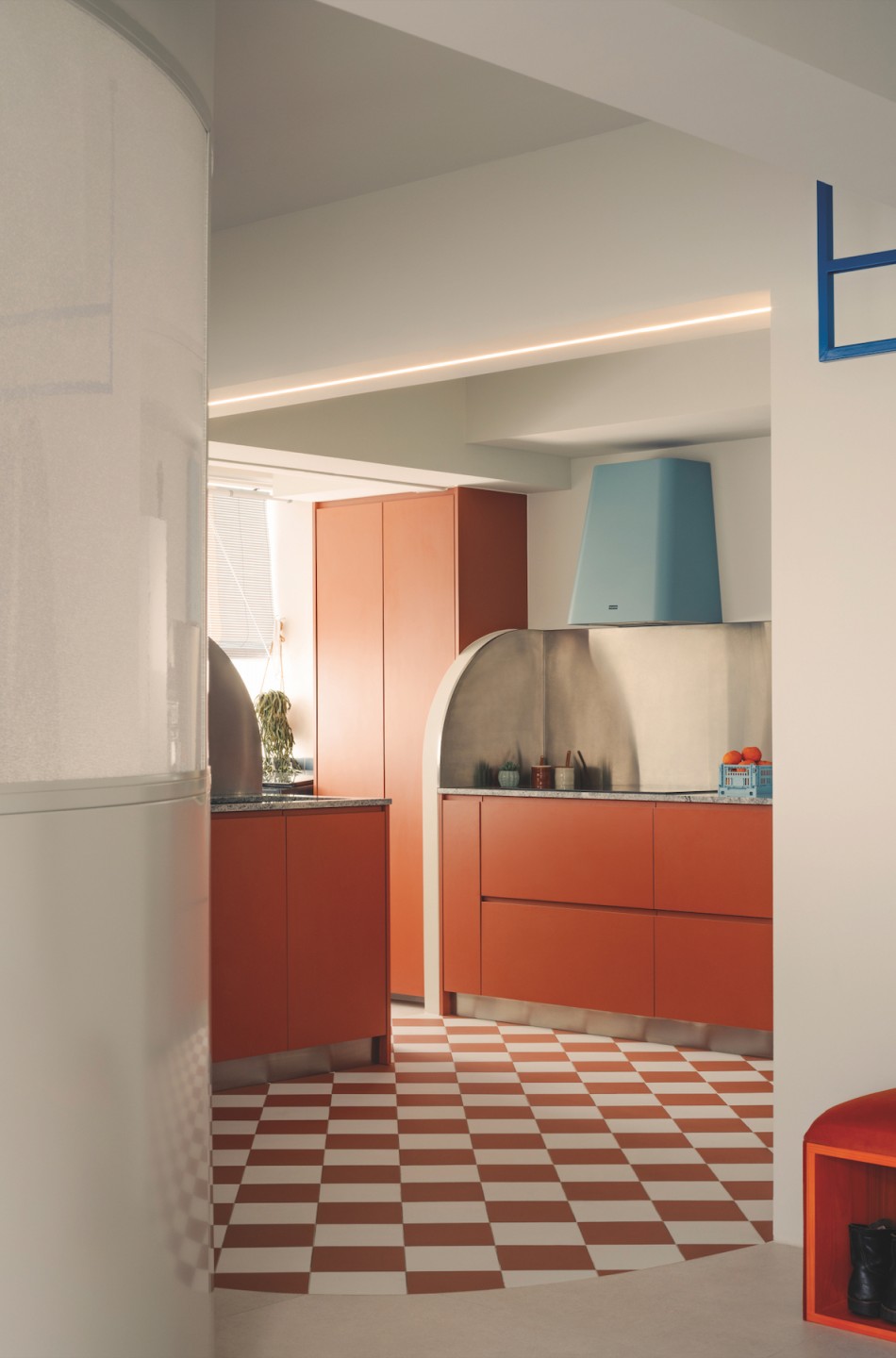
Most importantly, they are both daring enough to deviate from convention.
“The design of our home should suit our needs, even if it means breaking the mould of its original layout. We wanted to avoid the cliches of a typical HDB, like maintaining the common rooms for fear of losing resale value or keeping the standardised gate,” Ruby explained.
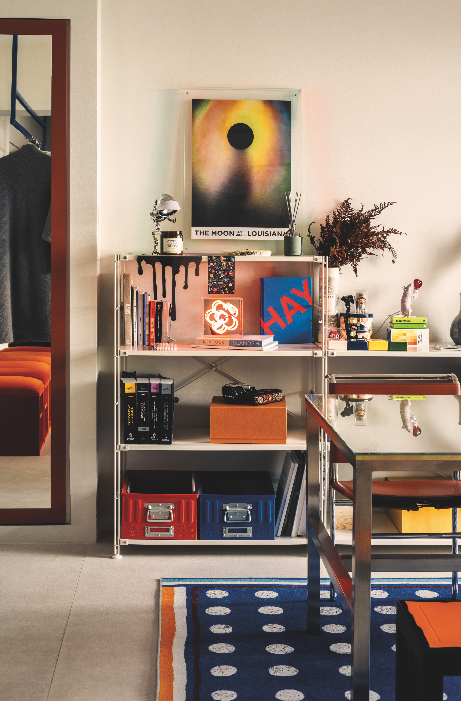
For Ruby, the mark of a well-designed home is one she looks forward to returning to. To elevate this experience, the couple has integrated smart technology.
“As our lights, air conditioning, and other appliances can be accessed through one app, we were able to set up processes to complement our daily routines, like making the home comfy when we’re on the way home,” Joshua said.
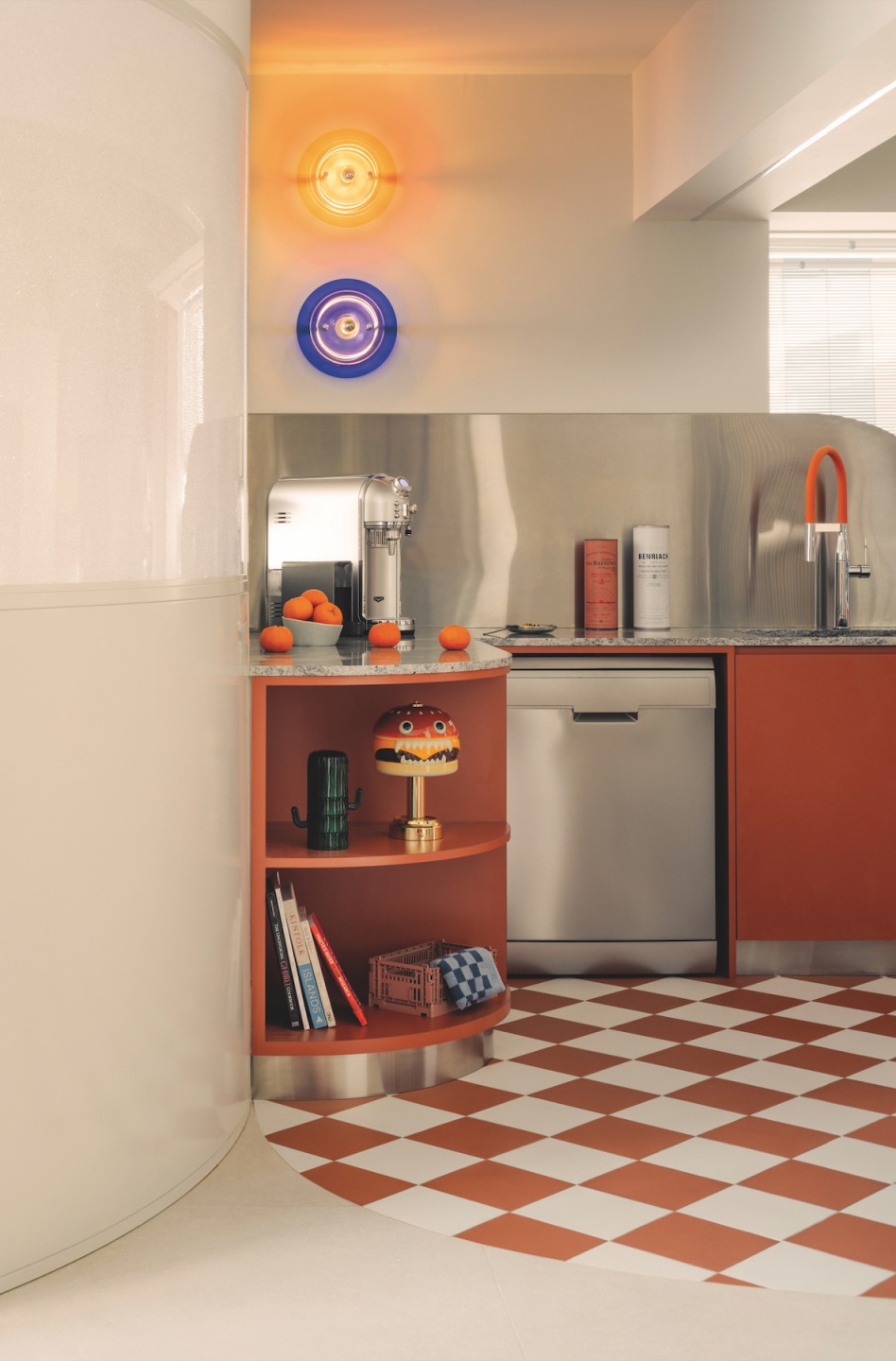
This technology extends to creating perfect ambiances for various occasions, such as setting the ideal lighting for movie nights with a simple tap.
“It’s these small conveniences that streamline our lives and significantly enhance our living quality,” he added.
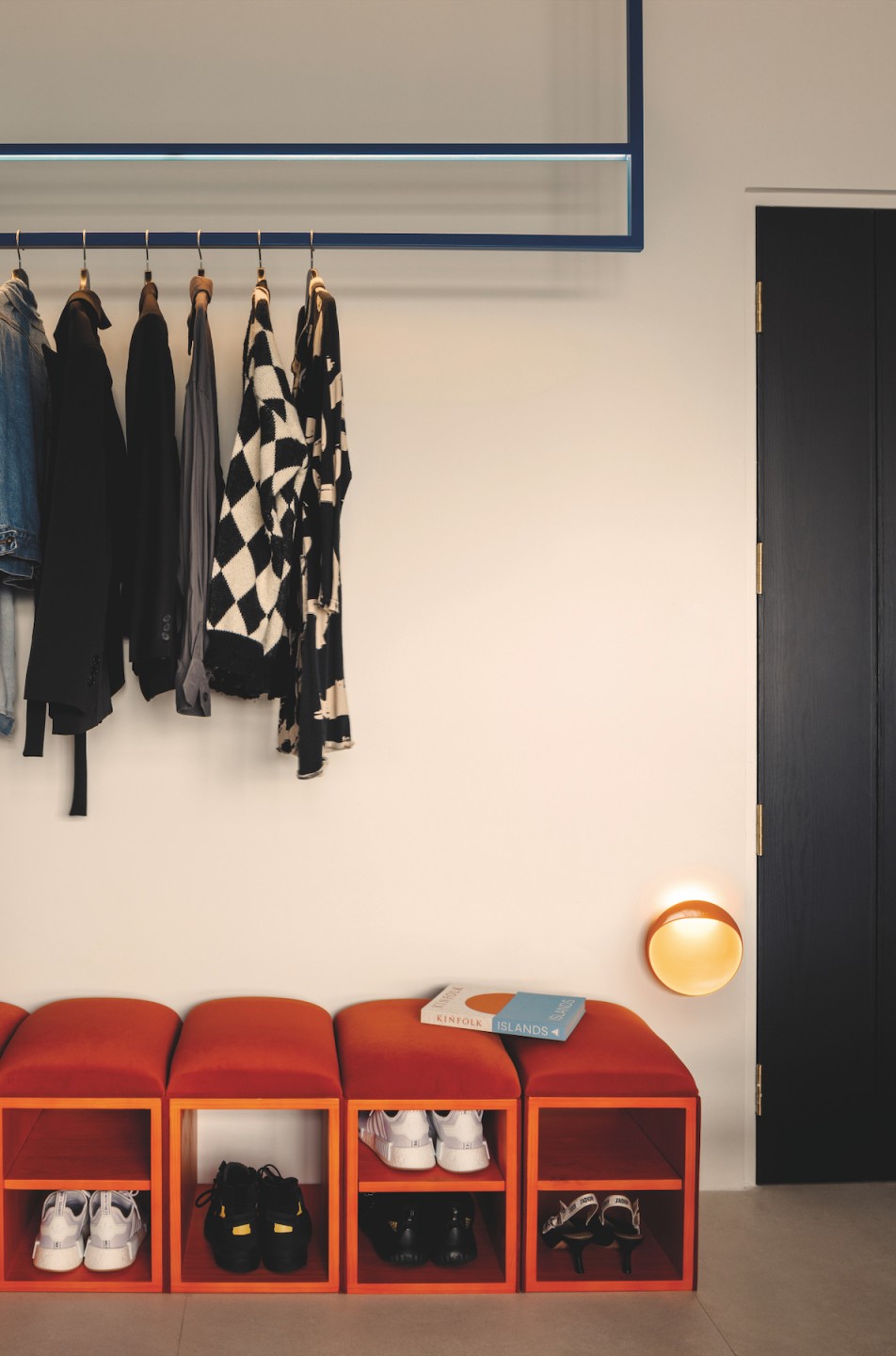
Home office
The entrance is the first clue that this is no ordinary home, and visitors quickly pick up on it.
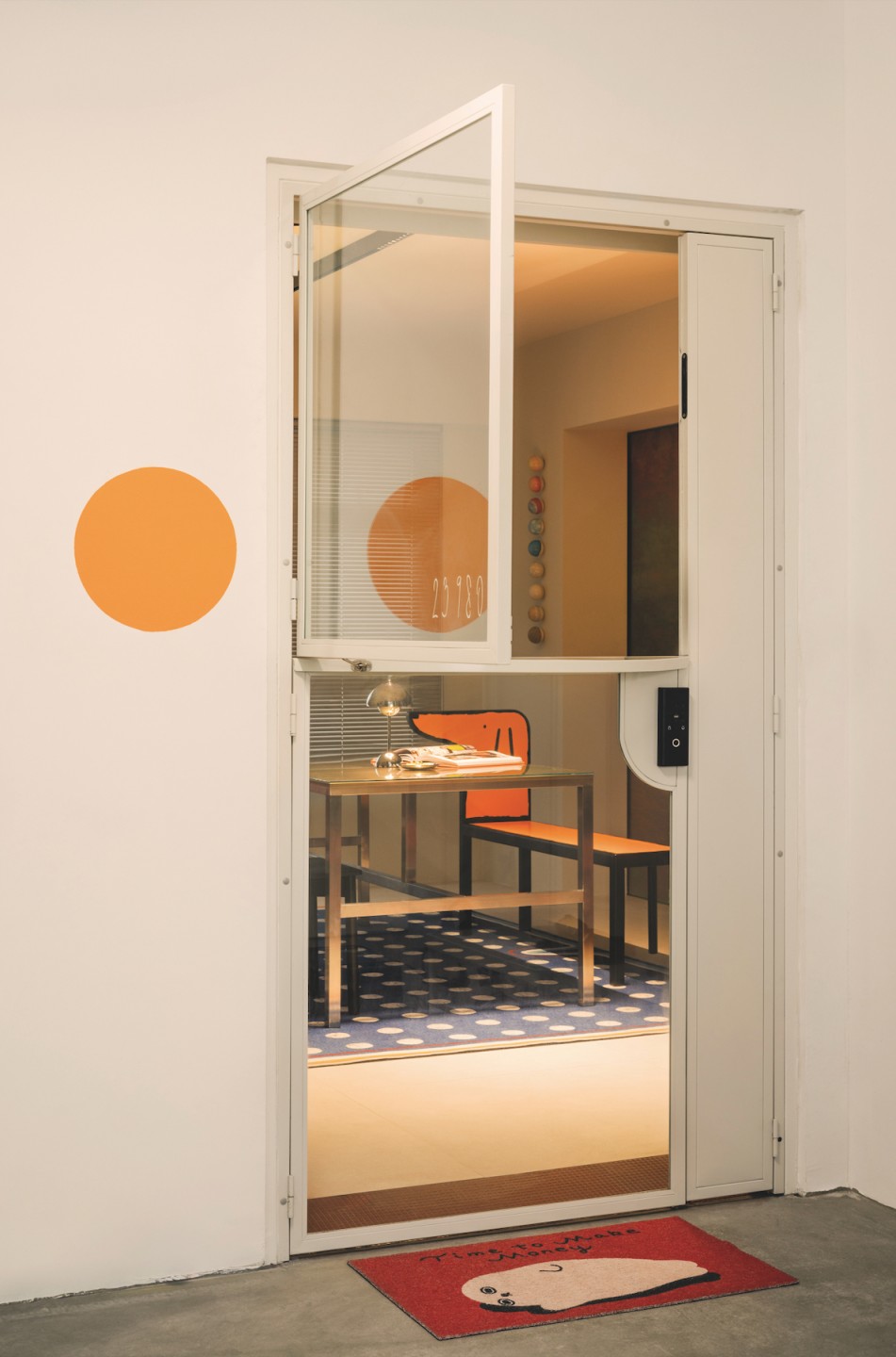
“Delivery persons are always surprised by our Dutch-style gate. It enables us to open the top half for ventilation while the bottom half remains closed, and the fact that it’s made of glass also allows dogs to satisfy their curiosity while maintaining that boundary,” Ruby said.
In the foyer, she installed a coat rack in the style of a retail store. This frees up space in their wardrobe and keeps clothing that doesn’t need to be cleaned after each use—like jackets and hats—out of it.
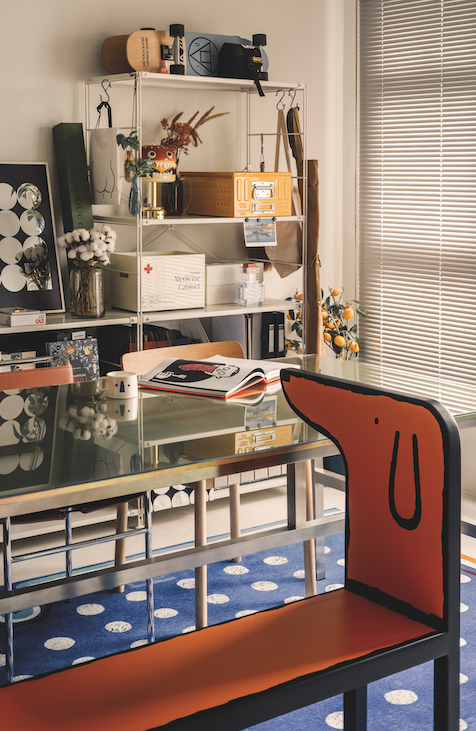
In the same spirit of functionality, what was once the living room now accommodates a 2-metre dining set.
“The dog bench in the dining area was the start of our 23 pieces of orange decor in the house. Throughout the house, you’ll see seemingly random pops of orange blending in with the rooms,” she added.
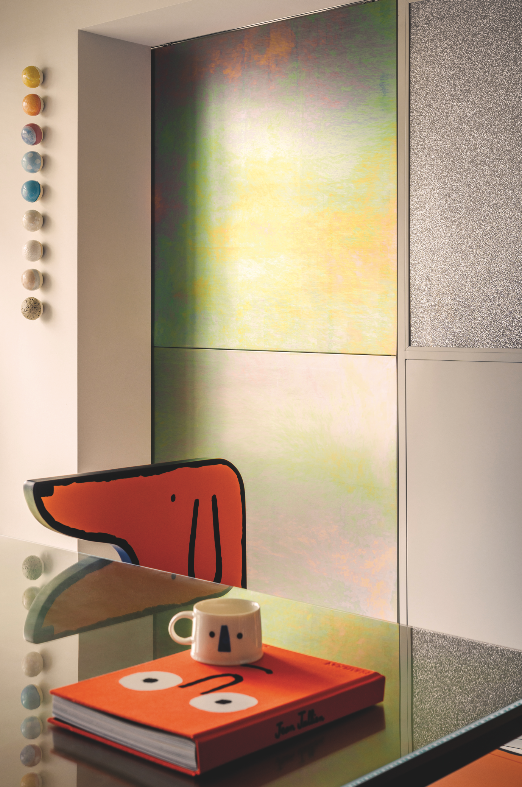
This area is both a showcase for Ruby’s prized possessions and a meeting space for her and her clients. Its strategic location ensures that her material and colour samples are easily accessible and offers clients a real-life glimpse of the interior designer’s creativity.
The kitchen, decked out in a cartoon-esque colour palette, is particularly striking. It houses a bomb shelter turned dry pantry and a washing area that eagerly awaits the couple’s incoming furkids. “Interestingly, it is currently considered an extension of the mud room where most of the guests wash their feet,” Ruby said.
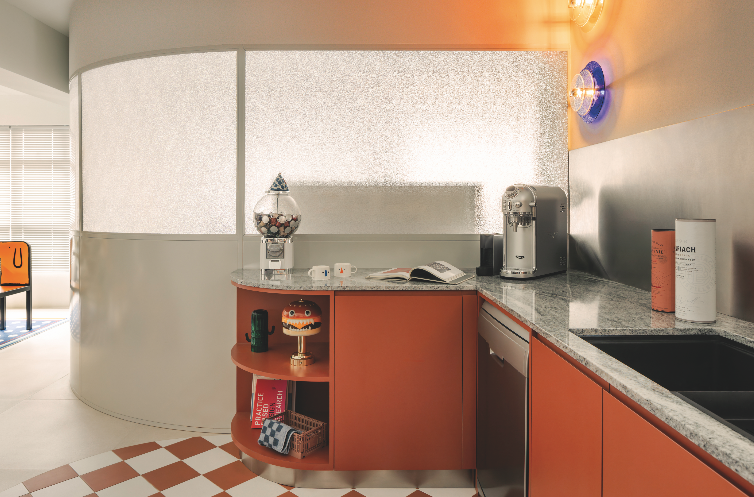
The dining area and kitchen are demarcated by curved dividers, which function as privacy screens that allow Ruby to conduct consultations while Joshua is lounging in the living room. The latter is notably expansive, a result of demolishing the walls of two adjacent bedrooms.
“After designing many houses, I realised that spare bedrooms often convert into ‘store rooms,’ and it would be a waste to have two of those in our tiny apartment. Combining them eliminates underutilised space, like the passageway, and enlarges the living area where we will be spending most of our time.”
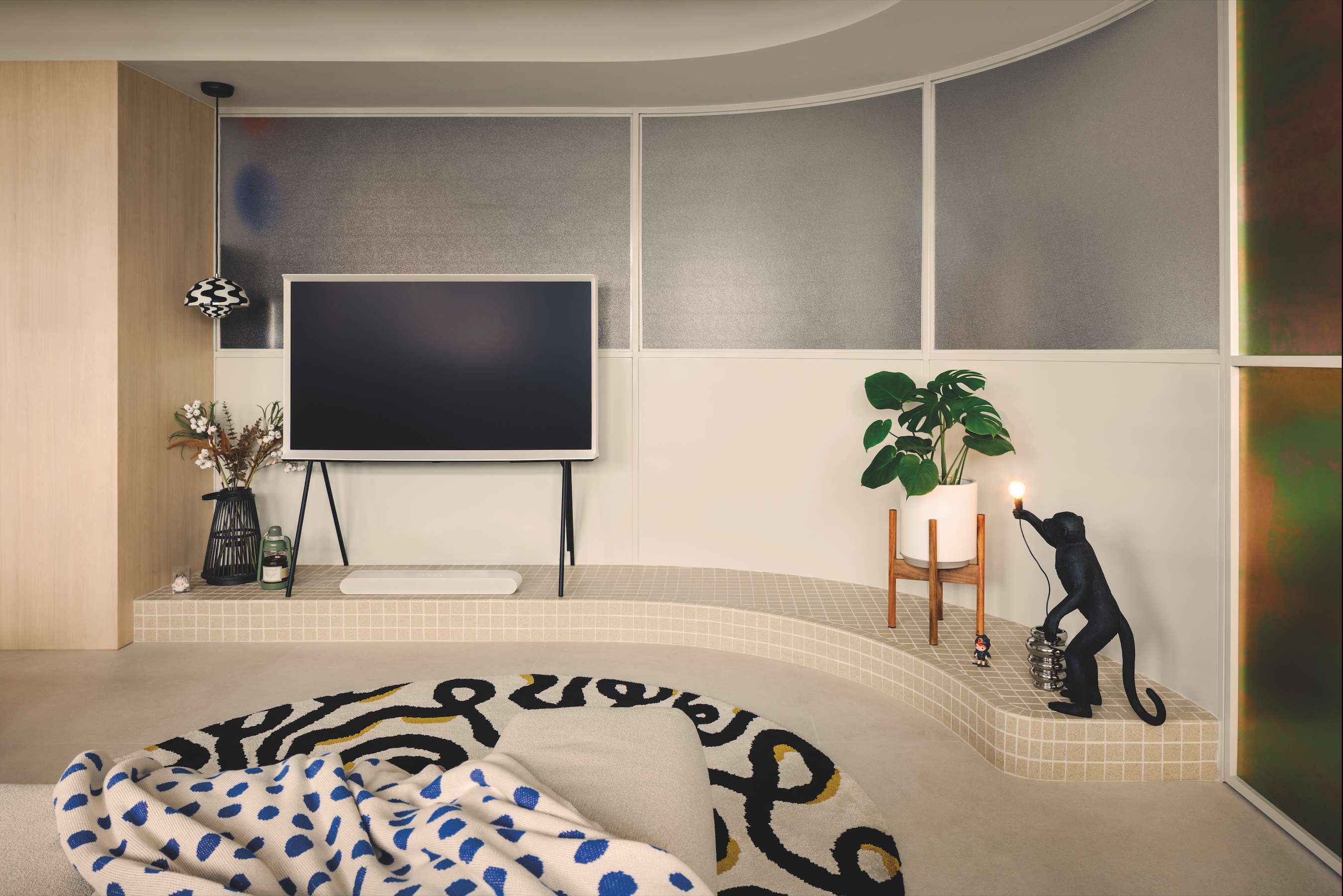
Here, the couple also created a platform for the television set and Mojo—their beloved monkey lamp and a statement piece in the hall.
“It tells a cute story beside our monstera; it’s as if the cute little fellow is providing light for the plant, or exploring a rainforest. We enjoy dressing Mojo up on different holidays just to provide a little festive mood.”
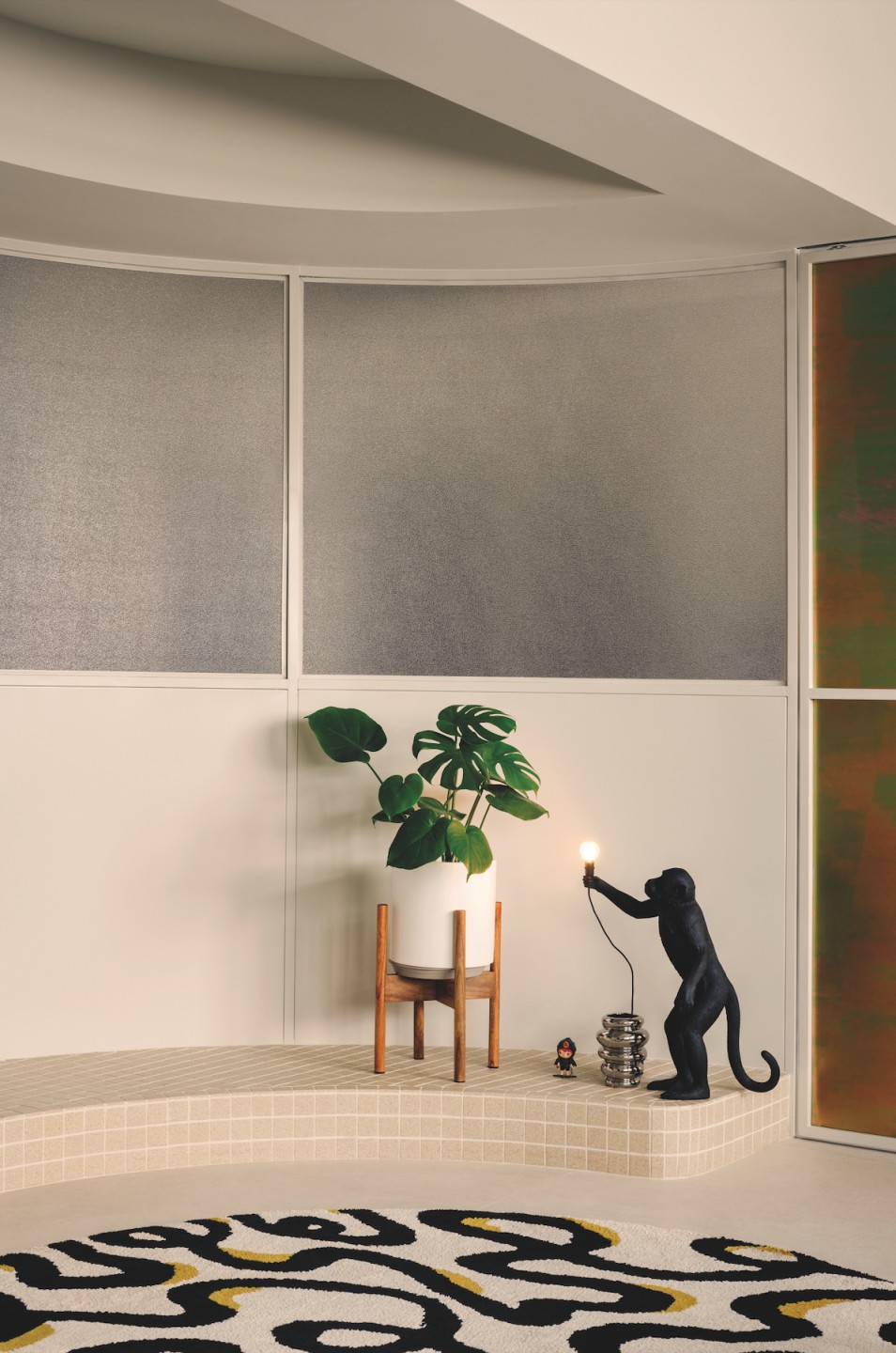
His and hers
Instead of using the common bathroom for guests and reserving the master bathroom for themselves, the couple opted for a his-and-hers configuration. As a result, the common bathroom has been transformed into Ruby’s dresser.
The storage typically found under the sink has been cleverly moved behind the mirror, restricting guest access to her personal items and creating extra space for a bar stool for Ruby to sit on while getting ready. The undermount sink can also be covered to extend the countertop space when needed.
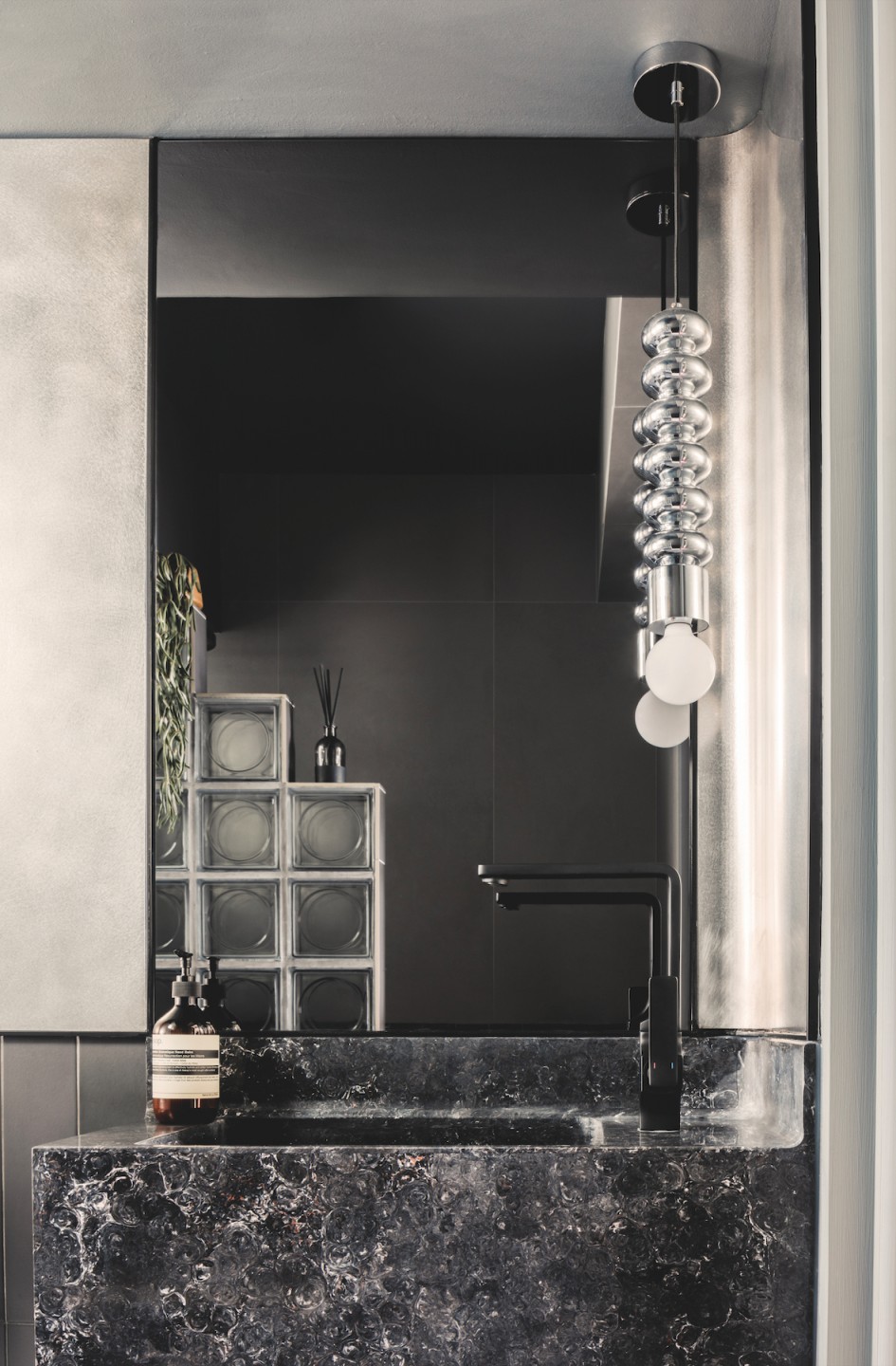
“Separating the vanity from the master bedroom allows one of us to prepare for work without disturbing the other who may still be asleep,” Ruby said.
This freed up space in the bedroom for a tiny “walk-in” wardrobe, achieved by removing the bedroom door and installing a divider.
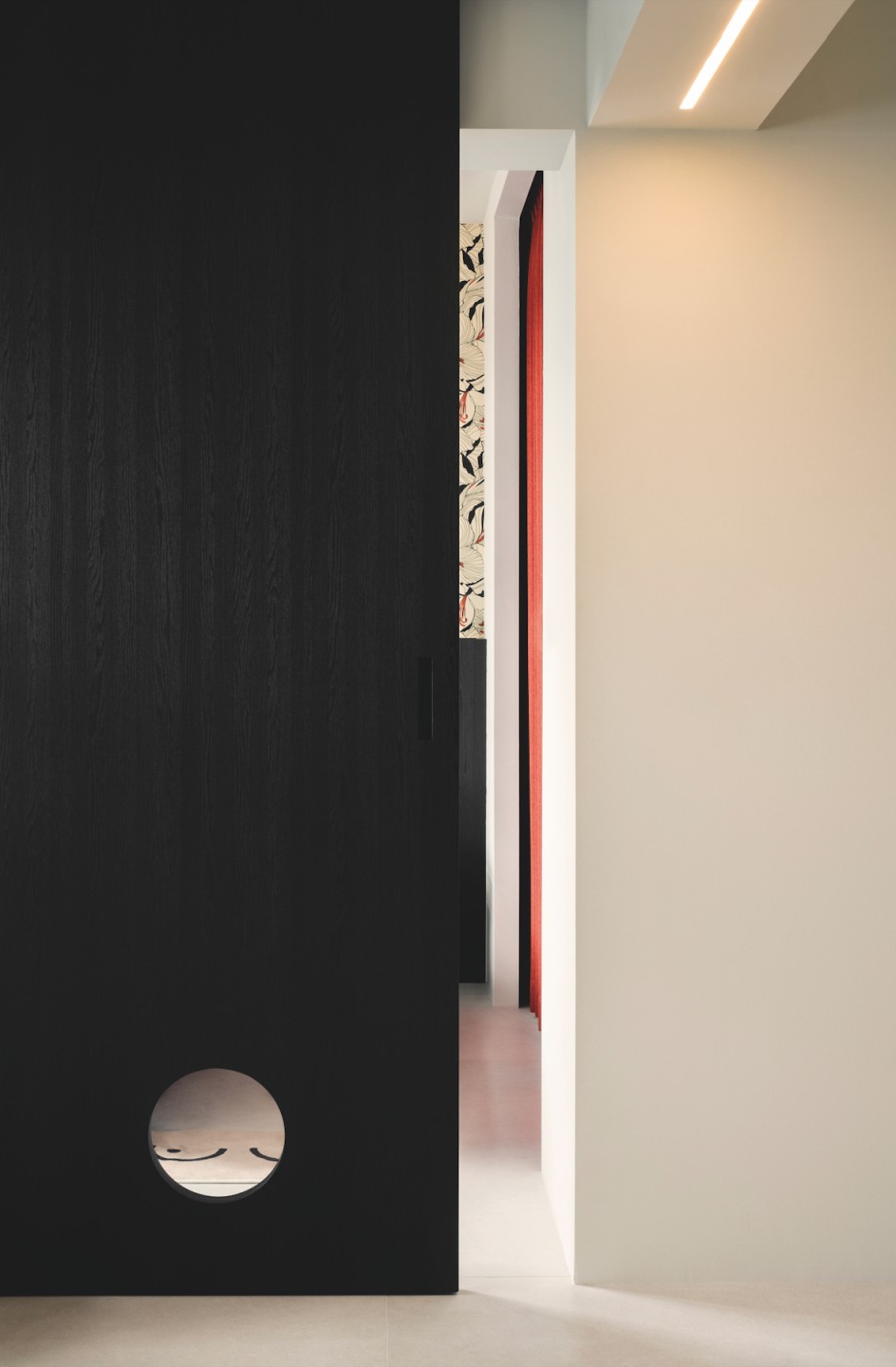
“The hole in the divider adds a playful element, contrasting with the flatness of the solid sliding door. It’s also meant to serve as a peephole for our future pets,” Ruby shared.
They also removed the door of the master bathroom – a space dedicated to Joshua’s preference for a monochromatic aesthetic. It features a ledge for relaxing in the shower, alongside metallic panels and a “shower screen” made of tetris-like glass blocks.
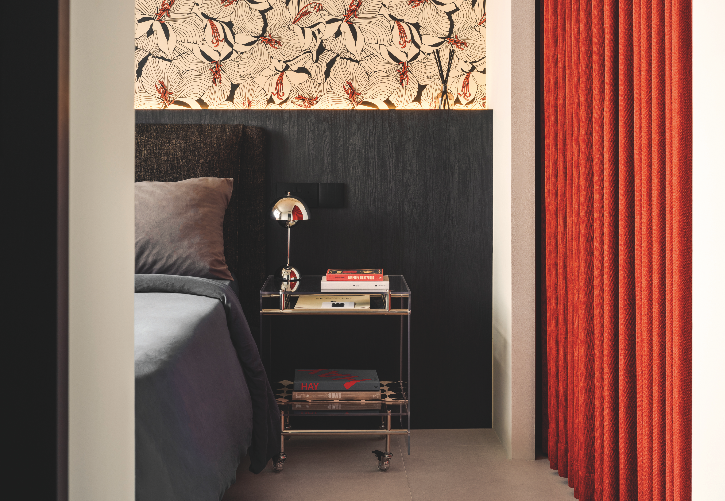
“This decision was made when we were on- site. As the glass blocks were being installed, the odd shape caught our attention and we realised it added a unique visual interest,” Ruby said.
Ultimately, it’s these small details that make the renovation process unforgettable and the big, bold moves that make their home one-of-a-kind. Whenever guests visit, they are consistently amazed by the extent to which the couple has diverged from the original layout.
“As we say, if your house looks the same as when it was built, you’re just renting it from its future owners.”
This post was adapted from an article originally published in the July 2024 issue of SquareRooms.



